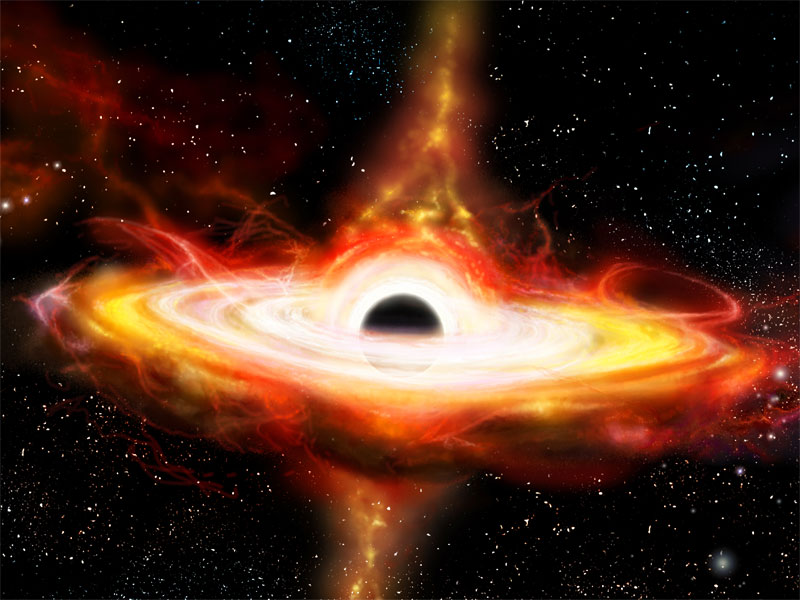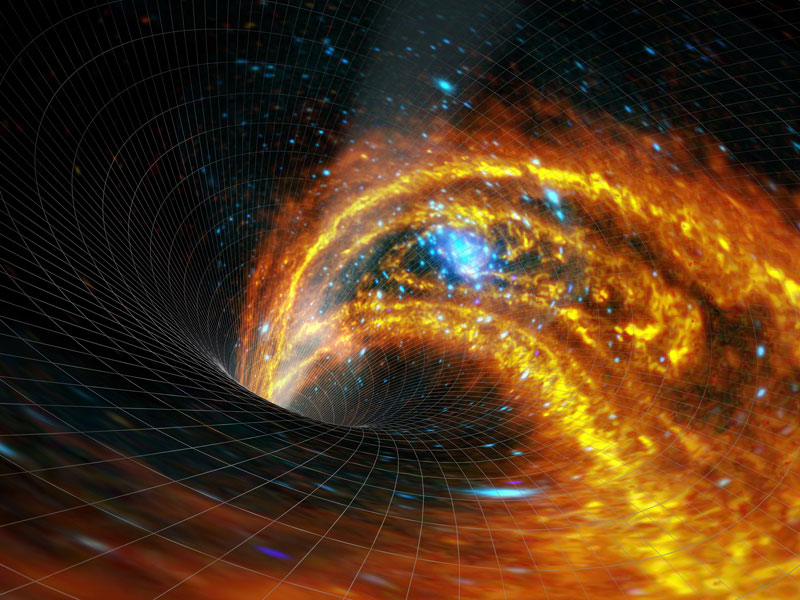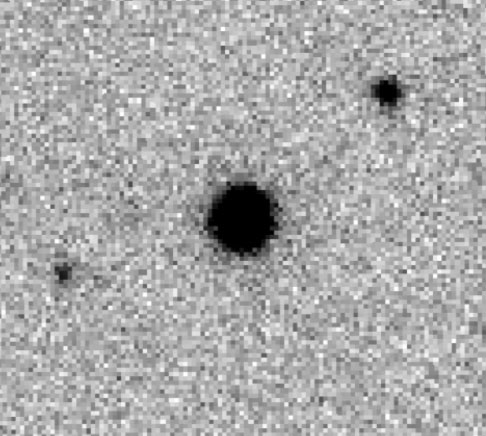
2nd July 2020 Fastest-growing black hole identified Astronomers report that J2157 is now known to have 34 billion solar masses and is consuming the equivalent of nearly 1 solar mass every day, making it the fastest-growing black hole ever detected in the Universe.
Researchers at the Australian National University (ANU) discovered SMSS J215728.21-360215.1 – commonly known as J2157 – back in 2018. The same team has now studied the object in more detail, and determined both its mass and the amount of material it consumes. The results are simply mind-blowing. The team used the Very Large Telescope (VLT) in Chile. They knew that J2157 is actually a quasar – an extremely bright active galactic nucleus, in which a supermassive black hole is surrounded by a gaseous accretion disk, as shown in the artist's impression above. As material in the disk falls towards the black hole, energy is released in the form of electromagnetic radiation, which can be observed across the electromagnetic spectrum. Particles of dust and gas accreting around the edge are accelerated at nearly the speed of light, almost like a "natural" particle accelerator. The VLT's data provided highly accurate measurements of the forces involved. J2157 is now known to be 34 billion times the mass of our Sun. Even the mighty Sagittarius A*, the supermassive black hole that lurks at the centre of our own Milky Way galaxy, is "only" 4.2 million solar masses, or about 8,000 times less. If you replaced Sagittarius A* with J2157, it would appear 10 times brighter than the full moon in our night sky. Furthermore, its mass is growing at an almost unimaginable rate: nearly 1 solar mass every day. That is equivalent to our Sun, which comprises 99.8% of the mass in our entire Solar System, being swallowed every 24 hours. Put another way, it is about 3.8 planet Earths of material every second.
"We knew we were onto a very massive black hole when we realised its fast growth rate," said team member Dr Fuyan Bian, a staff astronomer at the European Southern Observatory (ESO), which operates the VLT. "How much black holes can swallow depends on how much mass they already have. So, for this one to be devouring matter at such a high rate, we thought it could become a new record holder. And now we know." J2157 is located an extremely long way away – approximately 12.5 billion light years from us, which means we observe it when the Universe was just 10% of its current age. Since that ancient time, it has likely grown even bigger, perhaps absorbing many other black holes. "With such an enormous black hole, we're also excited to see what we can learn about the galaxy in which it's growing," said Dr. Christopher Onken, from ANU's Research School of Astronomy and Astrophysics. "Is this galaxy one of the behemoths of the early Universe, or did the black hole just swallow up an extraordinary amount of its surroundings? We'll have to keep digging to figure that out." The team's paper, which included contributions from the University of Arizona, appears in Monthly Notices of the Royal Astronomical Society.
Comments »
If you enjoyed this article, please consider sharing it:
|









